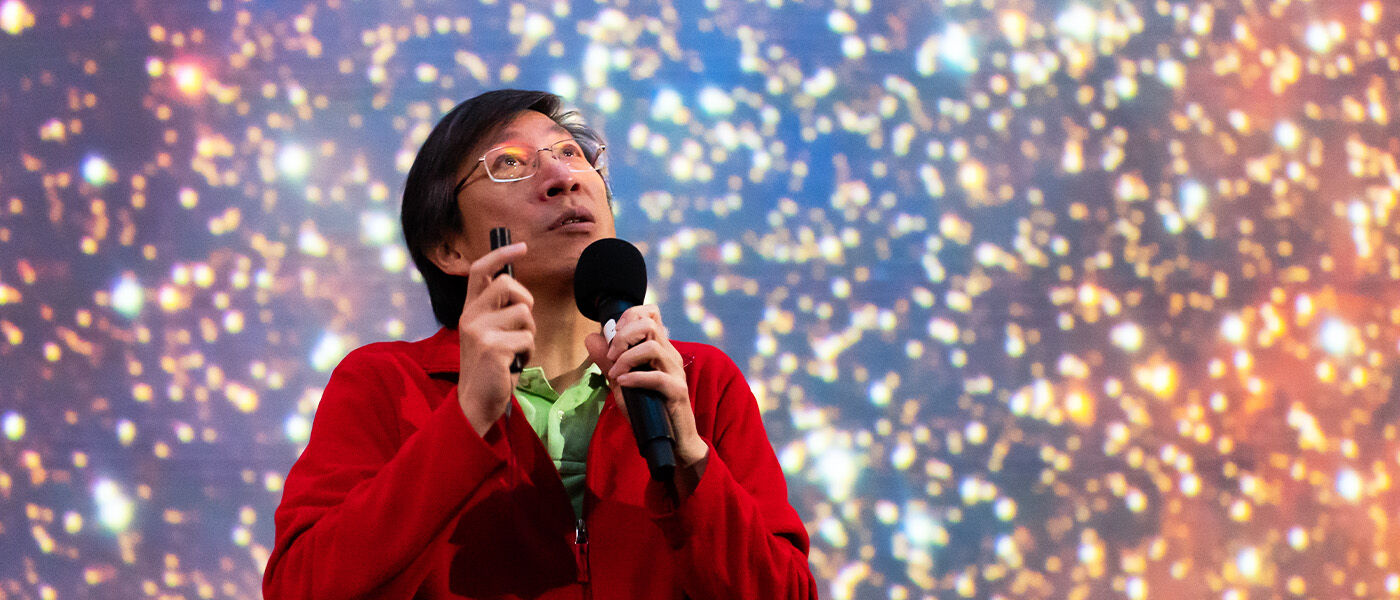First Light and Beyond with Dr. Charles Liu
On November 20, 2025, Liberty Science Center hosted Dr. Charles Liu, astrophysics professor at the City University of New York’s College of Staten Island, for a new Space Talk, First Light and Beyond: New Views of the Cosmos with the Vera Rubin Observatory.
The Vera C. Rubin Observatory, located on the peaks of Cerro Pachón in the Andes mountains, opened up its view of the cosmos in June 2025. The Observatory, featuring the largest digital camera ever built for astronomy and a massive 27-foot-wide mirror has already revolutionized our view of the Universe and we were thrilled to have Dr. Liu in the largest planetarium in the country to showcase some of its newest findings with us.
One goal of the Observatory is to survey the Universe around us in as much detail as possible, aiming to capture images of approximately 20 billion galaxies over the next 10 years. One of the first images shared during his Space Talk is referred to as the Cosmic Treasure Chest, a gigantic 3.2 gigapixel image that we were able to zoom into and experience in that full resolution showcasing a staggering 10 million galaxies in just one small portion of the sky. This image, in addition to showcasing the staggering number of galaxies in our Universe, serves as just a starting point. Astronomers like Dr. Liu hope to return to this same area of the sky numerous times over the years to look for any changes like massive supernovae as stars reach the ends of their lives, or flares from black holes as they consume stars.
This image captures a small section of the Vera C. Rubin Observatory’s Cosmic Treasure Chest, offering a vivid glimpse of the variety in the cosmos. Visible are two prominent spiral galaxies, three merging galaxies, galaxy groups both near and distant, stars within our own Milky Way, and much more.
Credit: NSF–DOE Vera C. Rubin Observatory
https://rubinobservatory.org/gallery/collections/m...
In addition to this, the observatory is also keeping an eye on objects closer to home and discovered over 2,000 asteroids right here in the Solar System. Among these are 7 that are classified as Near-Earth asteroids, those that pass within about 30 million miles of Earth, and after careful study we know they pose no danger to Earth. This, though, is just the beginning as astronomers estimate the Rubin observatory will find 1-2 million asteroids in just the next couple of years.
Keep your eyes out for new image releases and countless new discoveries from this groundbreaking observatory in the coming years!
Join us on December 18th for our next Space Talk, Exoplanets and the James Webb Space Telescope, with Dr. Emily Rickman, science operations scientist for the European Space Agency (ESA) at the Space Telescope Science Institute, as we explore the newest advances in our understanding of planets outside our own Solar System!
